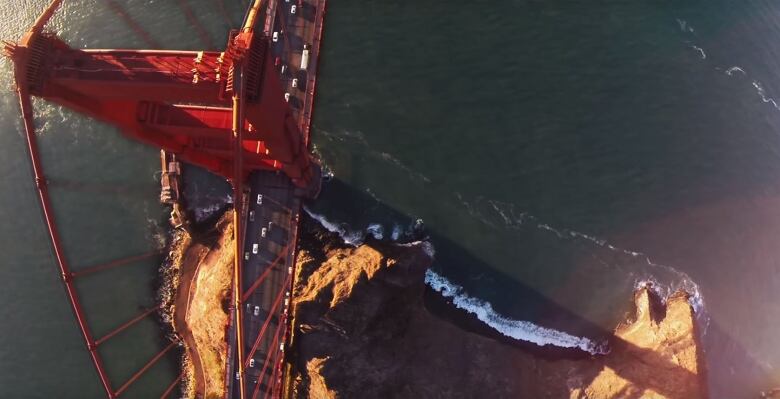Golden Gate Bridge suicide attempt survivor shares story in Calgary
Hines, 1 of 36 to survive the jump, raises awareness for suicide prevention
"What have I just done?"
Regret hammeredKevin Hines instantly. Fourseconds later, so would the impact of the water25 storeys below.
On Sept. 24, 2000, the then 19-year-old leapt off the Golden Gate Bridge, prompted byan onset of violentauditory hallucinations tied to his bipolar disorder.
"They were screaming in my head, 'You must die. You must die, now! Jump now!'"
Nearly 16years later, Hinesstill wakes in cold sweats in the dead of night, reliving the freefalland praying the samesilent prayer.
"I don't want to die. God, please save me."
The collision with the water's surface shattered Hines's T12, L1 and L2 lower vertebrae. Medical X-rays later showed he was two millimetres away from severing his spinal cord.
"Then I remember what I didn't expect opening my eyes, 70 feet beneath the water's surface.I'm alive, and I'm drowning."

Rescue
Coast guard officers pulled him from the water, stunned to find him alive.
Strapped to aflatboard, wearinganeck brace andfully conscious and aware, Hines remembers one of the officers calledhim "a miracle."
That unit had recovered just onelive person out of 57 bodies to that point, Hines said.
"As freaked out as they were, they asked me, 'Kid, do you know what you just did?'"
Their next question was, "Why?"
"This is the most pathetic answer I came up with. I said, 'I don't know. I thought I had to die today.'"

Ripple effect
Today, Hines is one of just 36 people (fewerthan one per cent)to survive a fall from the Golden Gate Bridge, and he's using the second chance life has given himto spread awareness about mental health and suicide prevention.
His soon to be released documentary titledSuicide: The Ripple Effectchronicles his progress toward hope and healing, and the effects his journeyhas had on those around him.
"The idea is to take not just a film, but to create a ground swell movement to change people's lives one presentation, one article, one film at a time," said Hines, who speaks Monday nightat a free event at the University of Calgary.
Yes, Hines still battles chronic suicidal thoughts, and there are moments where he believes he's "a burdento everyone who loves [him]."
"We are sick. We are damaged in our brains, in our minds, and our bodies," he said. "That's what leads to suicide the most epic brain pain you can experience."
But he's developed practical behavioursand reasoning patterns to help him battle through his thoughtswith the help of his wife, father, and professionals.

It's that message of resilience and triumph in the face of adversity that Hines wants to communicate.
"This is not your typical, depressive suicidal film," he insists.
"Let's get to that place where it's so commonplace, the conversation is so normalized that no one's being brave who talks about their brain disease they're just being honest."













_(720p).jpg)


 OFFICIAL HD MUSIC VIDEO.jpg)
.jpg)



























































































